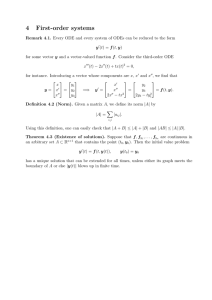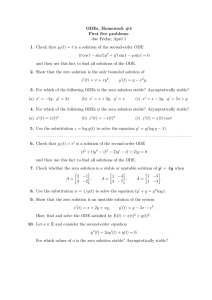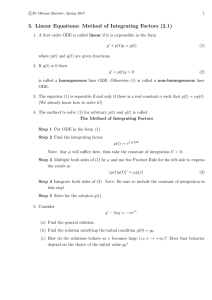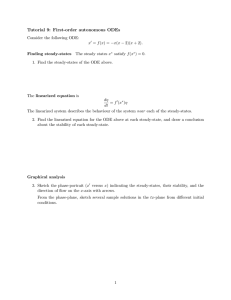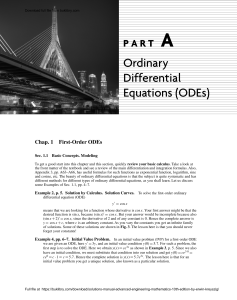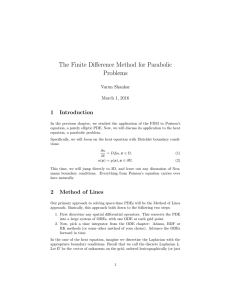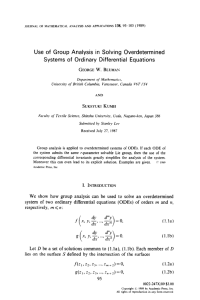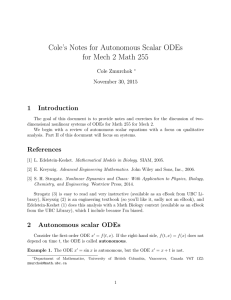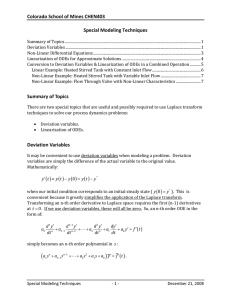HOMEWORK 2: MATH 265, L Keshet
advertisement
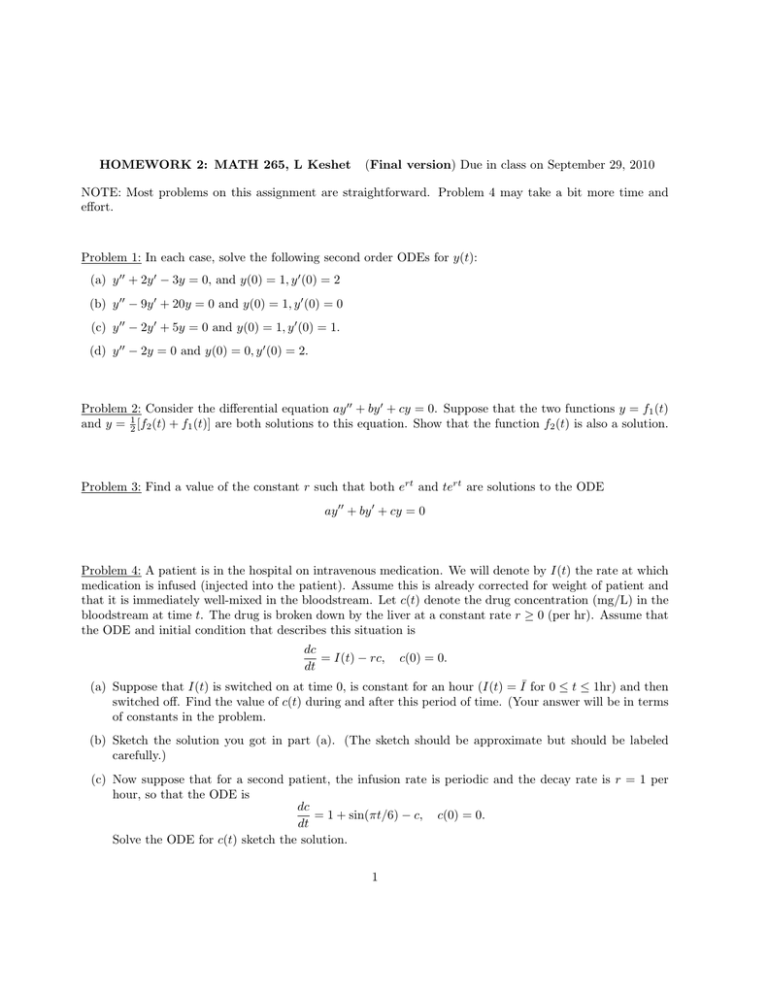
HOMEWORK 2: MATH 265, L Keshet (Final version) Due in class on September 29, 2010 NOTE: Most problems on this assignment are straightforward. Problem 4 may take a bit more time and effort. Problem 1: In each case, solve the following second order ODEs for y(t): (a) y 00 + 2y 0 − 3y = 0, and y(0) = 1, y 0 (0) = 2 (b) y 00 − 9y 0 + 20y = 0 and y(0) = 1, y 0 (0) = 0 (c) y 00 − 2y 0 + 5y = 0 and y(0) = 1, y 0 (0) = 1. (d) y 00 − 2y = 0 and y(0) = 0, y 0 (0) = 2. Problem 2: Consider the differential equation ay 00 + by 0 + cy = 0. Suppose that the two functions y = f1 (t) and y = 12 [f2 (t) + f1 (t)] are both solutions to this equation. Show that the function f2 (t) is also a solution. Problem 3: Find a value of the constant r such that both ert and tert are solutions to the ODE ay 00 + by 0 + cy = 0 Problem 4: A patient is in the hospital on intravenous medication. We will denote by I(t) the rate at which medication is infused (injected into the patient). Assume this is already corrected for weight of patient and that it is immediately well-mixed in the bloodstream. Let c(t) denote the drug concentration (mg/L) in the bloodstream at time t. The drug is broken down by the liver at a constant rate r ≥ 0 (per hr). Assume that the ODE and initial condition that describes this situation is dc = I(t) − rc, dt c(0) = 0. (a) Suppose that I(t) is switched on at time 0, is constant for an hour (I(t) = I¯ for 0 ≤ t ≤ 1hr) and then switched off. Find the value of c(t) during and after this period of time. (Your answer will be in terms of constants in the problem. (b) Sketch the solution you got in part (a). (The sketch should be approximate but should be labeled carefully.) (c) Now suppose that for a second patient, the infusion rate is periodic and the decay rate is r = 1 per hour, so that the ODE is dc = 1 + sin(πt/6) − c, c(0) = 0. dt Solve the ODE for c(t) sketch the solution. 1 Problem 5: A student solves a certain linear homogeneous differential equation of second order (e.g. y 00 + p(t)y 0 + q(t)y = 0) and finds two solutions: y1 (t) = 2et and y2 (t) = et−1 . Now he would like to find the constants c1 and c2 such that the solution y(t) = c1 y1 (t) + c2 y2 (t) also satisfies the initial conditions y(0) = 1, y 0 (0) = 1. The student encounters some difficulty. What is the difficulty, and why does it occur? (Trace the steps that the student might be making and help figure out why he/she runs into problems). Problem 6: Unlike linear ODEs, for which we have results guaranteeing the existence and “good behaviour” of solutions, nonlinear ODEs can have all kinds of problems. Consider the simple (nonlinear) ODE dy = y2 , dt y(0) = y0 . Solve this ODE using separation of variables. Show that the solution can “blow up” (become undefined) at some finite time. For what value of y0 will the solution “blow up” when t = 2? 2


